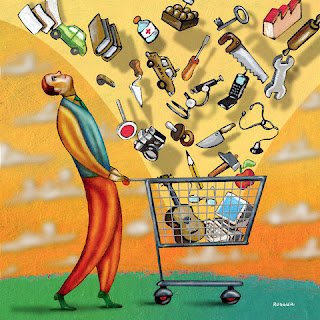To boost efficiency, the process of
the manufacturing of the product is manipulated accordingly to the situation
and criterion the business has to fulfill. The ways of preparation varies to
the type of products being prepared and the amount of customers. Here are a few
of the well-known methods of production:
Job Production
Alex is a car engineer who modifies cars for his customers. The cars are
redesigned specially by him to suit the customer’s liking with different ranges
of speed and handling. Although it might take some time, his customization are
impressive therefore the customers don’t mind paying a higher price for it. He
only continues to his other orders only after he finished his previous ones.
Job production refers to the individual production of an item which must
be completed before starting on another one. These productions are usually made to be
ordered and designed specifically to the customer’s liking.
Advantages
-Fulfills customer’s needs specifically
-Workers have more freedom and variations in their jobs
-Stocking of goods are not required due to individuality
Disadvantages
-Requires large amount of time
-Experience and skills are compulsory
-Expensive equipment and machinery
Batch Production
An order of a 100 cans of grape juice is made and 50 cans of orange
juice are made. The factory then manufactures the first batch of grape juice,
only proceeding to the manufacturing of the next batch of orange juice. Both
orders of juices are made with the same processes however differentiated by
their batches and their flavor.
Batch production refers to a group of items manufactured together by
batches. Similar products may be produced in different batches undergoing the
same processes. This production is usually established by businesses such as
food manufacturers with similar products to be distributed or sold.
Advantages
-Gives variation to the workers due
to the production of different products
-Larger range of coverage of
products therefore larger range of customers
Disadvantages
-Large amount of storage needed for raw materials and products
-More cost and time needed when
changing products
Flow Production
The coke manufacturing factory is required to produce 100,000 cans of coke
per week. The factory has to produce
coke non-stop in order to achieve the goal or loss will be suffered. Although most of the processes are fully automated,
there are still needs of labor for operation control in the assembly line. The
workers are allocated a specific role or task which will be repeated continuously.
Flow production is a continuous production of a standardized item in a massive
scale on an assembly line where workers and machinery have specialized tasks
and roles. This production is recommended for commercialized products which has
very high demands.
Advantages
-Mass production in a continuous process
-Specialization of work
-Profit from economies of scale
-Lower cost of production due to
lower requirements
Disadvantages
-Large amount of storage needed
-No variation in job
-Expensive machinery
-Very liable to demands with high
risks of overstocking

.jpg)













